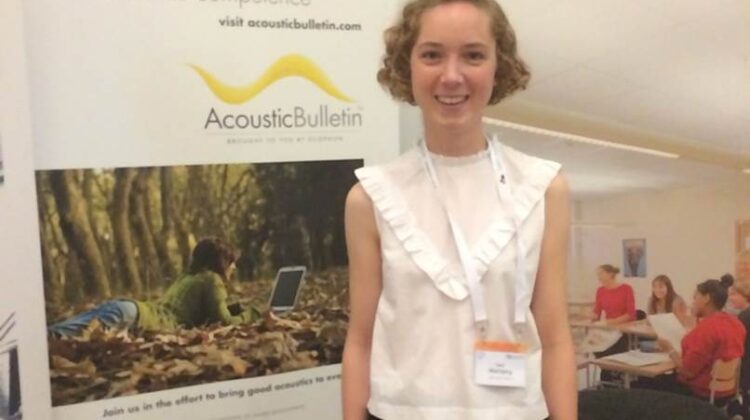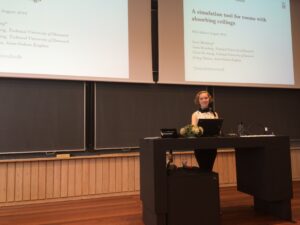
Internoise 2016 has just had its last presentation and we had the privilege to talk to one of the chairs of the Room Acoustic session.

My name is Gerd Marbjerg, I live in Copenhagen and work at the Technical University of Denmark (DTU). I recently graduated my PhD on room acoustic simulations, which I did in collaboration with Saint-Gobain Ecophon.
I was at Internoise to present part of my PhD work that concerned how sound scattering from objects is modelled in simulations.
The scattering from objects is very important for the acoustics of many common rooms and it is therefore also important to consider this scattering when the acoustics is simulated.
Being the session chair
Besides presenting my own work, I was also was also a chair person at a session regarding room acoustics. This session was the most relevant for me at the conference, since my main field of interest in acoustics is room acoustics and especially simulations of room acoustics. It was a quite broad session and concerned topics such as design of rooms, predicting, characterising and evaluating the acoustics of rooms, and also the more subjective aspects concerning how room acoustics affects our working conditions and general wellbeing.
Being the session chair was a first for me and it was fun to try, because it requires your full attention at all presentations and makes you very aware of the things presenters do that can make it hard to follow the full content of their presentations. I think I learned something from that for my own presentations.
The main focus of Internoise?
The main focus of Internoise is noise and how it can be reduced, which is a topic that is very broad and can be considered from many angles. This means that room acoustics is just a small part and room acoustic simulations is therefore an even smaller part.
I could have wished for more presentations directly relevant for my research, but I think that were some good discussions about what the goals should be for the acoustics of rooms, especially offices. Noise in open plan offices was, as at many conferences before, a topic that was discussed. Making the understanding of the importance of good acoustics for non-specialists was also a topic that had some focus.

DTU encourages their employees to go…
Conferences are in general very good places to make and maintain contacts, and of course also good places to make the community aware of your research. Internoise is one of the largest and most important conferences for acoustic researchers. The Technical University of Denmark (DTU) strongly encourages their employees and students to go to conferences, and was well represented at Internoise.
Because the range of topics at Internoise is quite broad, most of the researchers in acoustics find the conference relevant. Several recently graduated masters’ students also attended to present the work they did in their masters’ projects. This was partly possible because it is not that expensive to travel to Hamburg from Copenhagen, and finding the funding was easier for them than for the conferences at faraway destinations.
Focus on the people!
From the discussions at the conference, I take away the importance of considering the room acoustics in all stages of designing and using rooms. From the importance of making acoustics understandable and relatable for the people making the decisions, to predicting the acoustics before the rooms are built, the importance of evaluating the acoustics after they and built, and also the influence of the attitude we have towards noise in our environments. The opening keynote presentation focused on how subjective the experience of noise is. This means that when noise problems are handled, it should be done with focus on the people and their experience of it.

